Will wildfires leave lasting economic scars on California's vital wine country?
As firefighters contain the fires that have been raging since Oct. 8, California's wine industry is assessing the damage and hoping the tourists who fled the ash-filled air return.
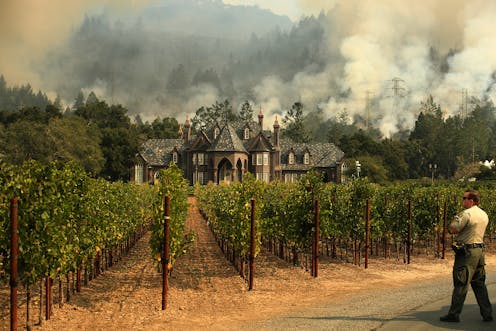
Now that the wildfires that have swept through the vineyards, forests and towns of Northern California’s wine country since Oct. 8 have been virtually contained, it’s time to assess the damage.
So far they have destroyed more than 8,400 structures in Napa, Sonoma, Mendocino, Lake and Solano counties and killed at least 42, making it the deadliest series of fires in California’s history.
The devastating scenes of burned-out neighborhoods and wineries that have flashed across global television screens have prompted tourists to contact hotels, wineries and restaurants in the area to cancel reservations. Wine tourists who were in Napa and Sonoma immediately packed their bags and fled the smoky air as it filled with gray ash.
Initial reports indicate that more than two dozen wineries suffered damages, which means the region’s overall wine production, with more than 1,200 wineries, survived largely intact. Yet the overall economic impact could end up cutting a lot deeper, not only for the region but for the state and the nation.
So how long will the horrific images linger in the minds of tourists and keep them from returning to a region that depends on wine tourism as its economic backbone?
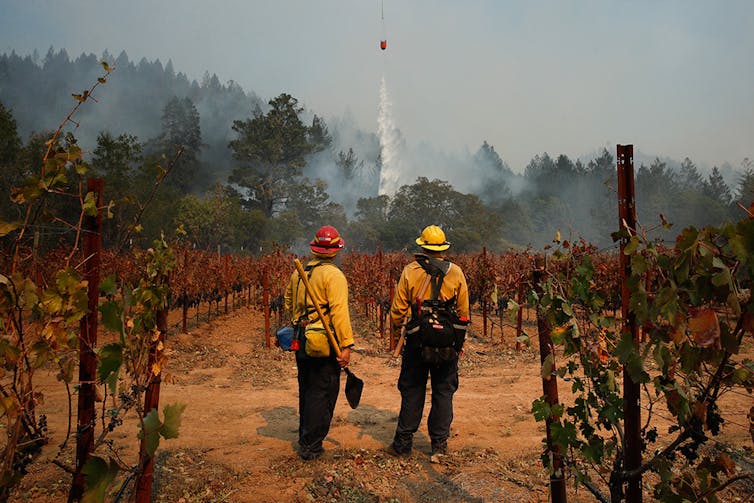
Napa and Sonoma: Beyond the tasting rooms
Wine tourism is a pillar of the economies in all five affected counties, employing tens of thousands of people. But the sudden absence of visitors to the tasting rooms of the region’s wineries will leave economic scars well behind those walls.
That’s because each time tourists visit a Sonoma or Napa Valley winery to taste or purchase a few wines, they reserve rooms in local hotels, dine out in regional restaurants, hire tour operators or enjoy local attractions such as hiking, biking, golfing or relaxing in a spa.
In Napa and Sonoma counties, the heart of America’s wine industry with almost 1,000 wineries between them, this is especially the case, as is clear when one looks at the numbers.
In 2016 alone, Napa Valley attracted 3.5 million tourists who, on average, spent US$402 a day on lodging, food and entertainment, resulting in $1.9 billion in total revenue. For Sonoma, visitors spent an average of $389 a day, or a total of $1.93 billion, in 2016.
Together the two neighboring counties employ more than 34,000 people in their tourism industries. At a time when both counties need additional funds to assist in rebuilding the infrastructure, any loss in tourism revenues will be painful.
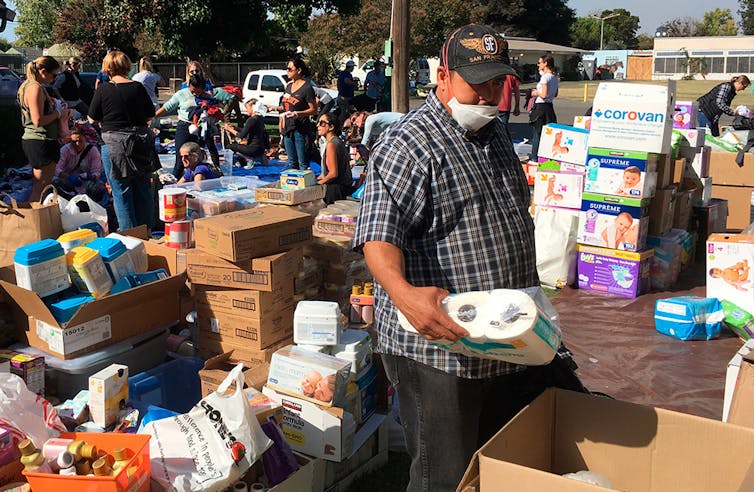
From stem to stem
While the affected counties will bear the brunt of any long-term pain, the effects will be felt beyond their rolling hills. It’s easy to see by following the grapes from the vine stems on which they are grown to the fine-stemmed glasses in which they are drunk.
After the grapes are grown and harvested, trucks ferry them to a winery facility for crushing and fermentation. Next the wine is aged, bottled and then sold to distributors, retailers or end consumers.
Each of these steps is part of an extensive supply chain that involves wages, salaries, interest payments, taxation, rents and profits, all of which generate economic activity in the surrounding counties, the state of California and the country.
Bottles, advertising, consulting, corks, barrels, cardboard, stainless steel tanks, forklifts and all kinds of goods and services come from around the country. And all these wine industry workers, wherever they live, support their local economies with their wages.
For example, when a glass company in Arkansas gets an order for 100,000 new wine bottles, new workers may be hired and more revenues are made by the glass company. The employees and the employer now have a little extra money to spend in their local stores, and the town in Arkansas gets an economic boost that would not have existed if it hadn’t received the glass order.
Many economic studies, such as ones by Frank Rimerman & Co. in St. Helena, California, an accounting firm that specializes in the wine industry, show how wide and deep the wine industry is, not just in Napa and Sonoma but throughout the state and in many other states.
Napa County has an economic impact in the county alone of $13 billion, according to a regional vintner association, and $50 billion nationally, supporting 46,000 and 303,000 jobs, respectively. Sonoma County’s local impact in 2012 was estimated at around $13.4 billion, supporting 54,297 jobs and $3.2 billion in wages.
Unfortunately, these effects work in reverse. When an industry contracts and reduces its orders along the supply chain, the links in that chain also contract.
For example, if there is a contraction of the wine industry due to inventory, grapes and rootstock – the part of the vine that lives underground – destroyed by fire, the reverberations are felt up the wine industry supply chain. Orders for barrels, bottles, tanks, forklifts and other equipment may fall, and the number of hired hands may decline, regionally and around the country.
Any weakness may lead to an increase in imports, which could further harm California wine. In short, even a minor reduction in wine sales can ripple throughout the system, potentially causing a negative impact for many others.
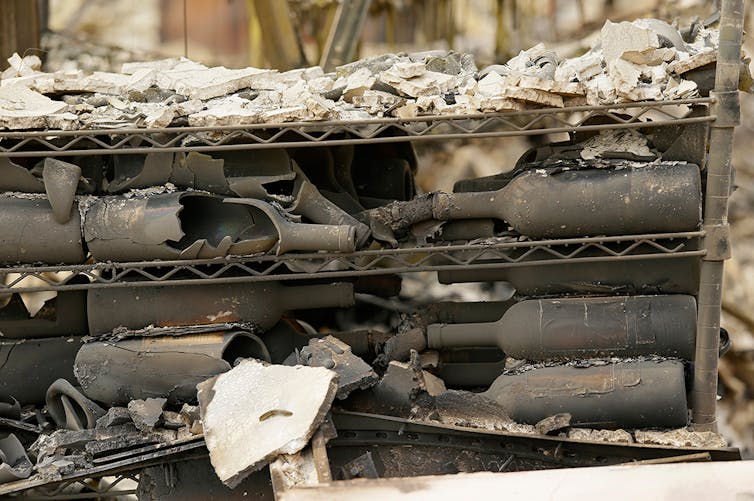
A closer look at the impact of the fires
Thus far, the extent of the damage to the industry is unclear.
What we know so far: A local paper reported that fires damaged or destroyed the property of 27 wineries in the region. Another source claims 47 of the Napa Valley Vintner trade group’s more than 500 members have reported direct property damage.
The fires have also exacerbated the region’s already severe affordable housing problem because so many homes were destroyed and 100,000 people have been displaced.
On the bright side, the vast majority of wineries and vineyards remain intact. Furthermore, more than 90 percent of the 2017 harvest was already picked, crushed and in the process of fermenting when the fires struck. Though it may be a smaller production year, the quality should be as high as ever.
In fact, many regions of Napa and Sonoma remain pristine and untouched by the fires, such as most along the Russian River, Sonoma Coast and famous Highway 29 route in the Napa Valley.
Also, University of California at Davis research shows that grapevines are very resilient, so even though the leaves were covered in smoke for nearly two weeks, the smoke will not affect next year’s grape quality.
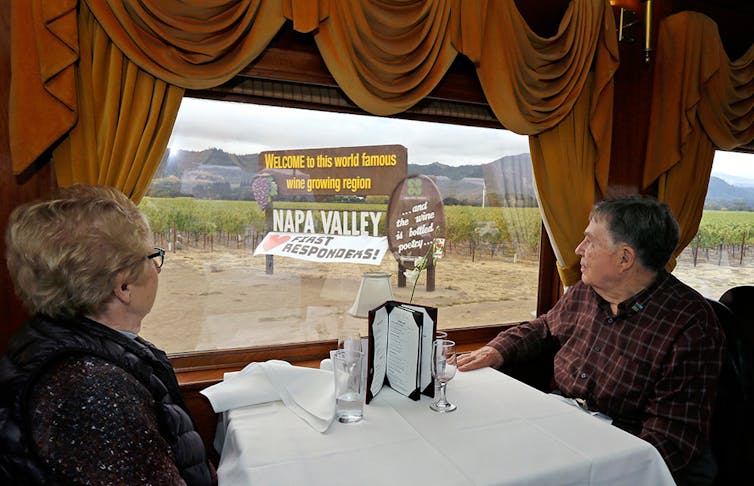
Support in a time of crisis
An interesting phenomenon occurred during the height of the wildfire crisis.
Many former tourists and wine club members contacted the wineries to see if their employees, vineyards and wines were safe.
Now, as employees return to work in the wineries, vineyards, hotels, restaurants and other tourist agencies, they are reassuring their customers and encouraging them to return to the region.
They also offered options for people to donate money to support firefighters and those in need. So in a time of crisis, it appears that support works both ways, and that wine tourists and wineries can be joined in a relationship that is symbiotic and not just focused on the material.
For readers interested in supporting these wineries, both big and small, the best way is to plan a trip to Napa, Sonoma, Mendocino, Lake and Solano counties. Or just pop down to your local wine shop, buy a bottle from the region and share a toast of thanks that this great American wine region is still able to produce some of the most delicious wine in the world.
That’s what we’ll be doing.
Robert Eyler is on the board of SommSelect, a wine curation company. and Redwood Credit Union, a $5 billion nonprofit financial cooperative. He also provides economic impact analyses for both private firms and public entities to help guide public policy at the local and state level.
Liz Thach does not work for, consult, own shares in or receive funding from any company or organisation that would benefit from this article, and has disclosed no relevant affiliations beyond their academic appointment.
Read These Next
The world risks forgetting one of humanity’s greatest triumphs as polio nears global eradication − 7
Polio may finally be defeated in the next 5 years. Will the world recognize what an extraordinary achievement…
People are getting their news from AI – and it’s altering their views
Even when information is factually accurate, how it’s presented can introduce subtle biases. As large…
Medieval peasants probably enjoyed their holiday festivities more than you do
The Middle Ages weren’t as dreary and desperate as you’d think, and peasants often had weeks of…





